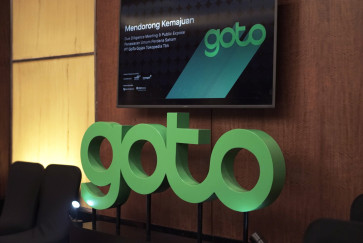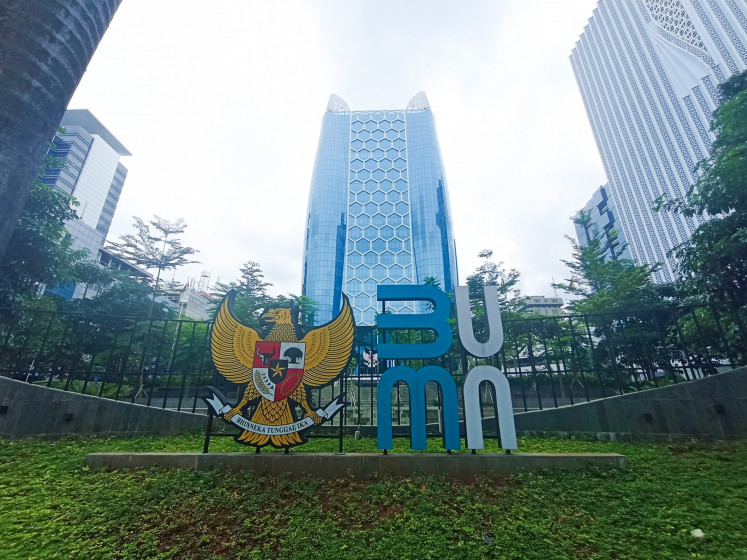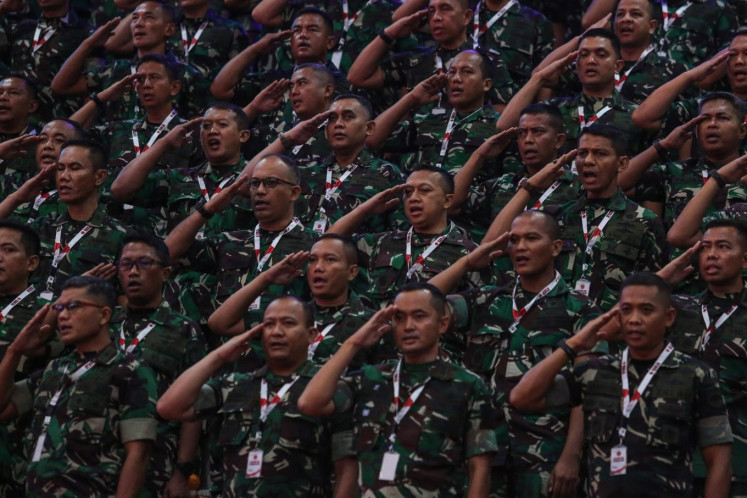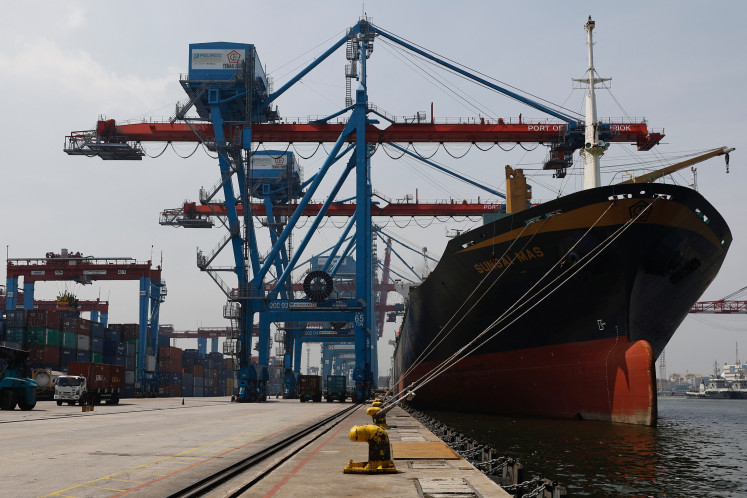Analysis: Promoting hydropower utilization in Indonesia
Indonesiaâs energy needs are expected to keep increasing in line with the continued growth of the nationâs economy
Change text size
Gift Premium Articles
to Anyone

I
ndonesia's energy needs are expected to keep increasing in line with the continued growth of the nation's economy. A report by the Agency for the Assessment and Application of Technology (BPPT), entitled Outlook Energi Indonesia 2013 (Indonesia's Energy Outlook for 2013), pointed out that in 2011, Indonesia's energy needs amounted to just 1.044 billion barrels of oil equivalent. Meanwhile, by 2030, the country's energy needs will have multiplied by roughly 2.5 the 2011 figure, reaching 2.5 billion barrels of oil equivalent.
Indonesia is likely to experience problems meeting this need in terms of its mix of energy sources. Currently, Indonesia is very dependent on fuel-based energy. According to the Indonesian Energy Balance report 2008 ' 2012, despite its declining trend, energy consumption deriving from fuels still stood at 51 percent in 2012. In contrast, oil production in Indonesia continued to decrease. As a result, Indonesia is vulnerable to changes in world oil prices, which finally tend to destabilize the exchange rate because of the country's sizable annual imports of oil.
In fact, Indonesia has alternative sources of energy that could be utilized, one of which is hydropower. According to the Masterplan Study for Hydropower Development in Indonesia in 2011, Indonesia has the potential to develop up to 26 gigawatts (GW) of hydropower from hydroelectric power plants.
This study also found that out of the maximum potential of 26 GW, the hydropower potential that could possibly be developed amounted to 12.4 GW, or 48 percent of the maximum. This latter figure is based on the assumption that hydroelectric power plants are not located in protected forest areas and that only around 2,500 households are subjected to resettlement as a result of the building of such plants.
If we look at the geographical spread, the greatest potential for development lies in Java, with a potential of 4.7 GW, followed by Sumatra with 4.0 GW, Sulawesi with 3.1 GW and Kalimantan, Maluku, East Nusa Tenggara and West Papua with 0.6 GW.
The opportunities for the development of hydropower itself are substantial. These opportunities derive from the increased consumption of electrical power and the government's efforts to encourage the use of renewable energy, especially hydropower. The need for Indonesia to diversify its energy sources from just using fossil energy, especially oil, is another key factor.
The consumption of electricity in Indonesia is expected to continue to rise. In line with Indonesia's economic growth, electricity consumption in Indonesia will grow at an average of 8.4 percent per year to a total of 386.6 TWh by 2022. Meanwhile, on the supply side, the government is also supporting the development of hydropower. The evidence of the National Energy Policy is that by 2025, new and renewable energy will enjoy a significant increase in their contribution to the Indonesian energy mix, from a meagre 5.7 percent in 2011 to 17 percent by the year in question.
The 2013 ' 2022 RUPTL states that by 2022, an additional 3.7 GW will be generated by hydropower-based plants, meaning that the total capacity of hydropower plants in that year will have reached 7.7 GW. Furthermore, the government is also supporting the operation of small-scale hydropower plants with capacities of less than 10 MW (mini/micro hydro). In the 2013 ' 2022 RUPTL, additional capacity derived from mini/micro hydro will have reached 0.8 GW.
Combined, all hydropower-based plants will thus make a contribution of 8.5 GW, or 7.9 percent of the total generating capacity of state-owned electricity company PLN and independent power producers (IPP) throughout Indonesia.
The government is also offering incentives to increase the role of hydropower. For hydropower plants above 10 MW, the same rules apply to those related to renewable energy plants. However, for the development of mini/micro hydro, the government has established an additional regulation in the form of a feed-in tariff for IPP to develop these types of plants, as stipulated in the Ministerial Decree of the of Energy and Mineral Resources Ministry (ESDM) No. 4 of 2012.
This feed-in tariff will be determined based on voltage type, as well as the geographical location where the mini/micro hydropower plant is to be built. Several other regulations related to the construction of hydropower plants have been formulated. These include the following: Finance Ministry Regulation (Permenkeu) No. 21/PMK.011/2010 concerning the offer of tax and customs incentives for activities related to the utilization of renewable energy sources. This consists of income tax, VAT and import duty relief provisions; it also includes Finance Ministry Regulation (Permenkeu) No. 139/PMK.011/2011, which regulates government guarantees as to the ability of PT PLN to meet its financial assurances with respect to the risk of default on power purchase agreements made with IPP.
It is worth noting that the development of hydropower plants in Indonesia is not without obstacles. Among these is the fact that there are only a very few contractors qualified to develop hydropower plants. Added to this is the classic issue of over-complicated licensing procedures that afflicts the construction of power plants in general, leading to delays in the completion of projects.
It is essential that experienced investors be invited to assist with the construction of hydropower plants, and that standards be created for all areas related to licensing based on river-flow masterplans, so as not to disrupt the utilization of rivers by communities that depend on them.
Despite the obstacles, the main thing is that it should be faced and resolved, rather than just seeking a poorer alternative or sweeping it under the rug to be dealt with at a later date. With the shift in fuel-subsidy funds, the construction of hydropower-based plants can now be prioritized.
With Indonesia's substantial resources in this area, this is one source of renewable energy that can enhance the country's energy security. Indonesia needs to reduce its dependence on fossil fuels, the price of which is very dependent on movements in world markets. Not to mention that they are also rapidly depleting. Thus, it makes sense to switch to renewable energy such as hydropower.
____________
The writer is an industry analyst at Bank Mandiri









